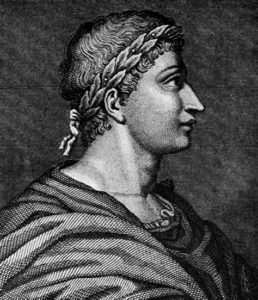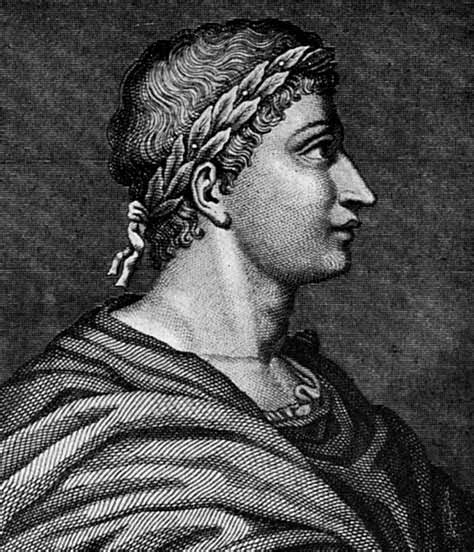Sharing is caring!
 I was admonished that my education is probably very different than yours. I had recommended The Art of Love by Ovid. It is my fault that I had not recognized you need to know the mythology of the Greeks and to a lesser degree the Romans to understand his writings. Take this line, “The Gnossian fair was wandering distractedly on the unknown sands, where little Dia is beaten by the ocean waves.” There are two words in that sentence that the modern reader probably would not know. Trying to look them up in the dictionary would also confuse you more than inform you. Take the word Gnossian. It seems to come from the Greek word Gnosis. It is a noun in Greek meaning knowledge. However, like many words, it has different connotations. I think Ovid would think of it in terms of self-knowledge – knowledge about yourself rather than knowing what a pine tree is. Dia is just as confusing. If you go to Wikipedia, you will come across something that looks like this: Dia (Ancient Greek: Δία or Δῖα, “heavenly”, “divine” or “she who belongs to Zeus”), in ancient Greek religion and folklore, may refer to:
I was admonished that my education is probably very different than yours. I had recommended The Art of Love by Ovid. It is my fault that I had not recognized you need to know the mythology of the Greeks and to a lesser degree the Romans to understand his writings. Take this line, “The Gnossian fair was wandering distractedly on the unknown sands, where little Dia is beaten by the ocean waves.” There are two words in that sentence that the modern reader probably would not know. Trying to look them up in the dictionary would also confuse you more than inform you. Take the word Gnossian. It seems to come from the Greek word Gnosis. It is a noun in Greek meaning knowledge. However, like many words, it has different connotations. I think Ovid would think of it in terms of self-knowledge – knowledge about yourself rather than knowing what a pine tree is. Dia is just as confusing. If you go to Wikipedia, you will come across something that looks like this: Dia (Ancient Greek: Δία or Δῖα, “heavenly”, “divine” or “she who belongs to Zeus”), in ancient Greek religion and folklore, may refer to:
- Dia, a goddess venerated at Phlius and Sicyon. She was seen by the locals as identical to Hebe and/or Ganymeda.[1][2]
- Dia, daughter of Aeolus, keeper of the winds and Telepora or Telepatra, daughter of Laestrygon. She was the sister of Androcles, Chrysippus, Iocastus, Phalacrus, Pheraemon, Xuthus, and the daughters’ as Aeole, Astycrateia, Hephaestia, Iphthe and Periboea.[3]
- Dia, daughter of King Porthaon of Calydon[4] and mother of Thersites and possibly the remaining five sons by Agrius.[5]
- Dia, daughter of the king Lycaon (thus sister of Callisto), mother of Dryops by Apollo.[6][7] She concealed her new-born infant in a hollow oak tree.[8]
- Dia, second wife of the Thracian king Phineus and by him, mother of Mariandynus and Thynus. She falsely accused of rape her step sons, Parthenius and Crambis, leading to their blindness and eventual imprisonment by Phineus.[9]
- Dia, the Perrhaebian daughter of Deioneus[10] or Eioneus,[11][12] wife of Ixion[13] (who killed her father so as to not pay the bride price) and with her husband, she became mother of the Lapith Pirithous, whose marriage to Hippodameia was the occasion of the Lapiths’ battle with the Centaurs. According to Homer, after having sex with Zeus, who was disguised as a stallion, she gave birth to Pirithous; a folk etymology derived Pirithous’ name from peritheein (περιθεῖν “to run around”), because that was what Zeus did to seduce Dia.[14][15][16][17][18][19]
- Dia, alternate name for Hippodamia, the wife of Pirithous (thus daughter-in-law of another Dia).[20]
- Dia, mother of Pittheus by Pelops.[21] She may have been identical with another Hippodamia, daughter of Oenomaus.
In ancient Roman religion, Dia may refer to Dea Dia.
From the amount of blue in those lines, you know there are many hyperlinks to more information. Trying to untangle all those and discover what it means in the sentence I quoted would probably leave you frustrated.
When I was in school many years ago, the stories of mythology would be included in things such as an English class. We would discuss and write about the stories from mythology. Nowadays, it might be stories about superheroes the English teacher would be using. Both types of stories would be useful to an English teacher for obvious reasons.
I must admit that I am much more fluent in stories from Greek mythology than I am in stories about today’s superheroes. It was my education that led you more than a bit astray. Sorry.

